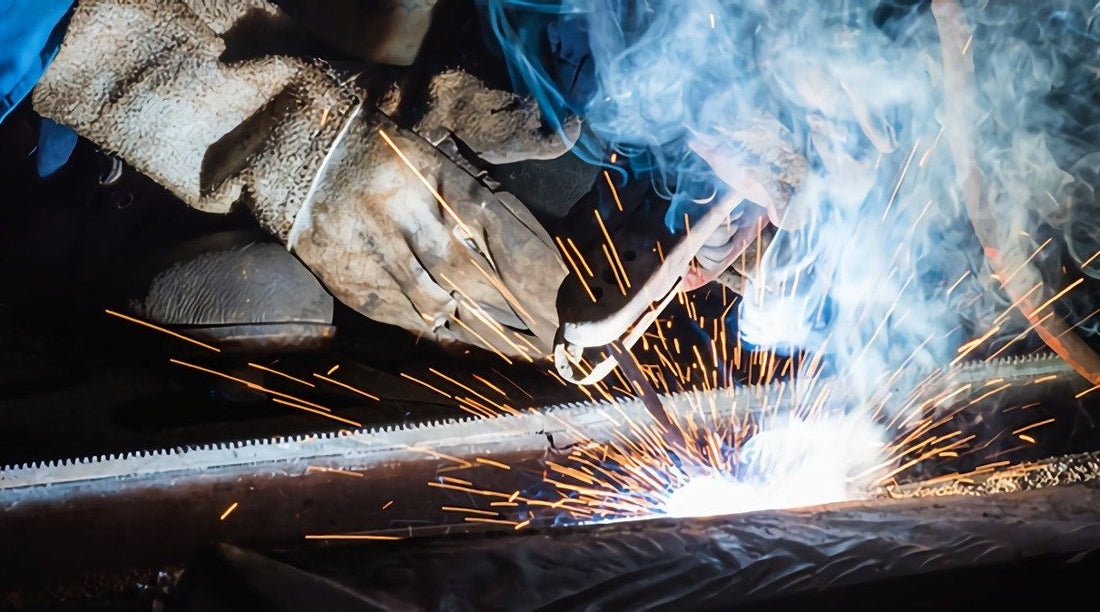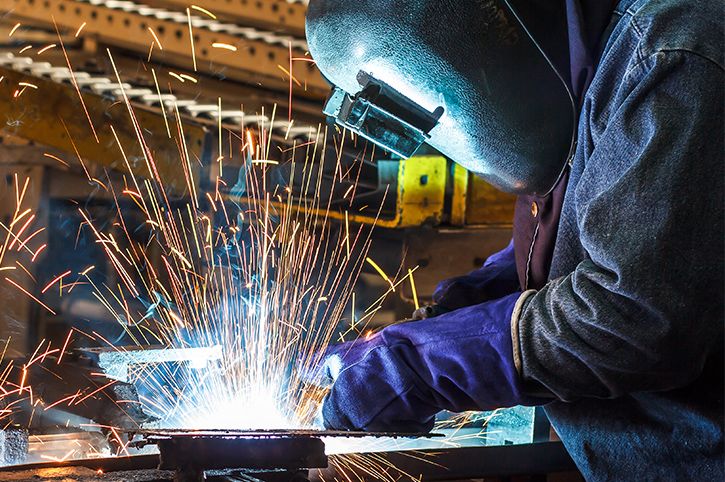Usual Welding Fixing Issues and Exactly How to Address Them Successfully
Welding fixings typically come across a series of problems that can threaten the integrity of the final item. Typical troubles include poor infiltration, porosity, and misalignment, amongst others. Each issue offers distinct difficulties that call for details methods for resolution. Comprehending these concerns is crucial for welders aiming to improve their end results and abilities. This conversation will certainly check out these usual welding repair service problems and effective approaches to address them.
Inadequate Infiltration
Insufficient penetration occurs when the weld steel falls short to fully fuse with the base product, leading to weak joints and prospective architectural failures. This problem commonly stems from not enough warm input, incorrect electrode angle, or incorrect welding speed. Welders may come across inadequate infiltration because of a mistake of the necessary parameters for a specific material thickness or kind. Additionally, contamination on the base product's surface can hinder efficient bonding, worsening the problem. To address poor penetration, welders must assure appropriate setups on their devices and maintain a clean job surface. Regular inspection of welds is suggested to recognize any shortages early, permitting prompt corrections and the prevention of endangered architectural honesty in welded assemblies.
Porosity
Porosity is a common issue in welded joints that materializes as small gas bubbles trapped within the weld metal. This flaw can endanger the integrity of the weld, leading to decreased toughness and potential failing under tension. Montana Mobile Welding and Repair Welding. Porosity commonly emerges from contamination, wetness, or inappropriate welding methods, which allow gases to run away right into the liquified weld pool. To attend to porosity, welders must ensure appropriate surface area preparation, keep a tidy working atmosphere, and utilize appropriate welding parameters. In addition, choosing the appropriate filler product and protecting gas can minimize gas entrapment. Regular evaluation and screening of welds can assist determine porosity early, ensuring prompt restorative activities are taken, thus protecting the top quality and dependability of the bonded structure
Misalignment
Imbalance in welding can emerge from various aspects, consisting of inappropriate configuration and thermal expansion. Comprehending the origin is crucial for efficient resolution. Several improvement techniques are offered to realign parts and guarantee architectural integrity.
Reasons of Misalignment
Welding imbalance frequently comes from a selection of underlying problems that can jeopardize architectural stability. One main reason is improper fit-up of components prior to welding, which can cause gaps and unequal surface areas. Variations in thermal expansion during the welding procedure can likewise cause distortion, particularly if the materials being joined have different coefficients of growth. Furthermore, inadequate securing and fixturing may fail to hold components safely in area, leading to movement throughout welding. Inadequately maintained devices, consisting of welding makers and tools, may introduce disparities in the weld bead, additional adding to misalignment. Driver error, stemming from not enough training or experience, can also play a substantial role in developing misaligned welds.

Modification Methods Offered
Dealing with imbalance efficiently requires a mix of corrective techniques tailored to the details concerns at hand. One typical method is the usage of components or jigs to hold elements in the appropriate placement during welding, guaranteeing consistent placement. In addition, preheating the materials can help reduce distortion and improve fit-up. For significant imbalance, mechanical adjustment strategies, such as utilizing hydraulic jacks or clamps, can be employed to correct the setting before welding. Post-weld warmth therapy might likewise be necessary to ease anxieties brought on by misalignment. Mindful assessment and adjustment during the setup stage can stop misalignment concerns from becoming considerable problems, promoting a smoother welding procedure and boosting total structural honesty.
Distortion
Distortion is a common difficulty in welding that can arise from different factors, consisting of irregular heating and cooling. Understanding the root causes of distortion is crucial for carrying out reliable avoidance methods. Addressing this concern not just enhances architectural stability but likewise improves the general top quality of the weld.
Reasons of Distortion
When based on the intense warm of welding, products usually undergo adjustments that can bring about distortion. This phenomenon mostly arises from thermal expansion and contraction during the welding procedure. As the weld location heats up, the product broadens; upon cooling, it gets, which can create internal stresses. In addition, uneven heating throughout a work surface can intensify these anxieties, resulting in warping or flexing. The sort of product additionally plays a significant duty; metals with differing thermal conductivity and coefficients of expansion may react in different ways, resulting in unpredictable distortions. Bad joint style and poor fixturing can contribute to misalignment during welding, enhancing the possibility of distortion. Recognizing these reasons is crucial for effective welding repair service and prevention methods.
Avoidance Techniques
Effective prevention techniques for distortion during welding concentrate on managing heat input and making sure correct joint design. Keeping a consistent warmth input aids to lessen thermal expansion and contraction, which can lead to distortion. Using strategies such as preheating the workpiece can additionally lower the temperature level slope, promoting consistent heating. Additionally, choosing appropriate joint layouts, such as T-joints or lap joints, can enhance security and minimize stress and anxiety concentrations. Applying proper check my blog fixturing to safeguard the work surfaces in area better help in preserving placement throughout the welding procedure. Staggered welding series can distribute warmth much more uniformly, protecting against local distortion. By using these methods, welders can substantially lower the probability of distortion and boost the general high quality of their welds.
Breaking
Fracturing is an usual issue experienced in welding fixings, commonly arising from various aspects such as incorrect air conditioning prices, material choice, or insufficient joint preparation. The incident of cracks can greatly jeopardize the stability of the weld, causing potential failures throughout operation. To resolve this issue, welders must initially examine the origin, ensuring that materials work and properly selected for the particular application. In addition, managing the cooling price throughout the welding process is necessary; quick cooling can cause anxiety and lead to breaking. Correct joint layout and prep work also add to lessening the threat. Applying these strategies can improve weld top quality and resilience, eventually decreasing the probability of cracking in ended up weldments.

Insufficient Combination
A considerable issue in welding fixings is insufficient blend, which happens when the weld metal does not properly bond with the base material or previous weld passes - Montana Mobile Welding and Repair Welding. This issue can bring about weak points in the joint, potentially endangering the honesty of the great site bonded framework. Variables contributing to insufficient blend include not enough warm input, improper welding method, and contamination of the surface areas being signed up with. To resolve this concern effectively, welders need to ensure appropriate pre-weld cleansing and surface area preparation, in addition to change their welding specifications to accomplish adequate penetration and blend. Routine inspection during the welding process can also aid determine incomplete combination early, enabling timely restorative procedures to improve the general quality of the weld
Overheating
While welding fixings can improve structural integrity, overheating provides a considerable obstacle that can lead to product destruction. Excessive warmth during welding can alter the mechanical residential or commercial properties of steels, leading to reduced stamina, boosted brittleness, and bending. This sensation is particularly vital in high-stress applications where architectural reliability is paramount. Identifying overheating can involve aesthetic inspections for discoloration or distortion, along with checking temperature level during the welding process. To reduce the dangers associated with overheating, welders should use proper methods, such as regulating warm input, changing travel rate, and using appropriate filler materials. In addition, carrying out pre- and post-weld warm treatments can help restore product residential properties and enhance the total top quality of the repair, making sure lasting efficiency and security.
Regularly Asked Concerns
What Are the Common Signs of a Welding Defect?

Exactly How Can I Test My Welds for Top quality?
To examine welds for quality, one can make use of aesthetic inspections, ultrasonic testing, and radiographic approaches. Each technique assures architectural honesty, identifies flaws, and validates adherence to defined criteria, inevitably improving the dependability of the bonded joints.
What Security Precautions Should I Take While Welding?
When welding, one should prioritize security by wearing appropriate individual protective equipment, making certain correct ventilation, safeguarding flammable materials away, preserving a clean workspace, and being aware of environments to protect against accidents and injuries.
Can I Fix a Weld Without Renovating the Entire Joint?
Fixing a weld without renovating the whole joint is possible, relying on the damages (Montana Mobile Welding and Repair Welding). Methods such as grinding, including filler product, or using a welding procedure can effectively attend to details problems while protecting the surrounding structure
What Devices Are Crucial for Efficient Welding Repair Works?
Vital devices for reliable welding repair work consist of a welding device, cord brush, grinder, protective gear, clamps, and filler materials. Each tool plays a crucial duty in ensuring high quality and safety and security throughout the repair work procedure. Porosity usually occurs from contamination, moisture, or incorrect welding techniques, which enable gases to run away into the liquified weld pool. Poorly conserved equipment, consisting of welding equipments and tools, might present variances in the weld grain, more adding to imbalance. When subjected to the intense heat of welding, products usually undergo changes that can lead to distortion. Splitting is a common issue encountered in welding fixings, frequently resulting from different factors such as inappropriate cooling prices, material selection, or insufficient joint prep work. A substantial concern in welding repair services is incomplete combination, which occurs when the weld steel does not effectively bond with the base product or previous weld passes.